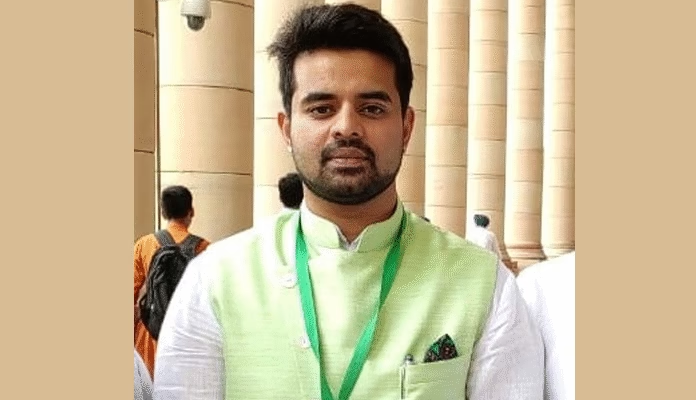
. Dynastic Politics: A Persistent Threat to Indian Democracy
 The issue of dynastic politics in India is not new, but a recent report released on September 12, 2025, by the Association for Democratic Reforms (ADR) and National Election Watch (NEW) has once again highlighted this longstanding problem. The report conducted a detailed examination of 5,204 MPs, MLAs, and Legislative Council members across the country, revealing a startling fact: one in five leaders, approximately 21 percent, comes from political families. This statistic is not just a matter of numbers; it reflects the weakening foundation of democracy. In the Lok Sabha, this figure rises even further to 31 percent. In the Rajya Sabha, it is 21 percent; in state assemblies, 20 percent; and in legislative councils, 22 percent of leaders operate under the shadow of familial politics. The roots of dynastic politics are so deep that young leaders from non-political families hardly get a chance to advance.
The issue of dynastic politics in India is not new, but a recent report released on September 12, 2025, by the Association for Democratic Reforms (ADR) and National Election Watch (NEW) has once again highlighted this longstanding problem. The report conducted a detailed examination of 5,204 MPs, MLAs, and Legislative Council members across the country, revealing a startling fact: one in five leaders, approximately 21 percent, comes from political families. This statistic is not just a matter of numbers; it reflects the weakening foundation of democracy. In the Lok Sabha, this figure rises even further to 31 percent. In the Rajya Sabha, it is 21 percent; in state assemblies, 20 percent; and in legislative councils, 22 percent of leaders operate under the shadow of familial politics. The roots of dynastic politics are so deep that young leaders from non-political families hardly get a chance to advance.
The question arises: why do only heirs of political families succeed, such as the Gandhi family in Congress, Tejashwi Yadav following Lalu in the RJD, Akhilesh Yadav after Mulayam Singh in the Samajwadi Party, the dynastic politics of Karunanidhi in Tamil Nadu, Aditya Thackeray after Uddhav in Shiv Sena, Chirag Paswan following Ram Vilas Paswan, the Badal family in Punjab, the Chautala family in Haryana, and Abhishek Banerjee after Mamata Banerjee in West Bengal? Is it that parties lack leaders from outside these families?
Looking at national parties, Congress is the most prominent example. The Nehru-Gandhi family legacy is clearly evident here. Names like Rahul Gandhi and Priyanka Gandhi have become symbols not just of Congress, but of dynastic politics in India. Among all Congress leaders, 32 percent are from political families. In the Samajwadi Party (SP), the figure is 30 percent; in the BJP, 17 percent; and in the leftist CPI(M), only 8 percent. In contrast, parties like the Trinamool Congress and AIADMK have much lower percentages 10 and 4 percent respectively because they rely on strong organizational and cadre-based structures that allow new leaders to emerge.
Regional parties present an even more worrying scenario. In NCP (Sharad Pawar faction) and Jammu & Kashmir National Conference, 42 percent of leaders come from political families. In YSR Congress, the figure is 38 percent, and in Telugu Desam Party (TDP), it is 36 percent. This indicates that dynastic politics has become a permanent feature even in South India, with leaders like Chandrababu Naidu of TDP and Jagan Mohan Reddy of YSR Congress as living examples.
Uttar Pradesh and Andhra Pradesh: Dynastic Strongholds
State-wise statistics are also concerning. Uttar Pradesh is considered the largest stronghold of dynastic politics. Out of 604 representatives, 141 (23 percent) are from political families. Among UP’s 28 Lok Sabha MPs are Rahul Gandhi (Raebareli), Akhilesh Yadav (Kannauj), Anupriya Patel (Apna Dal), Jitin Prasad (Pilibhit), and Jayant Chaudhary (RLD). Rajya Sabha members such as Ram Gopal Yadav, RPN Singh, and Neeraj Shekhar further prove that dynastic politics runs deep here. Among 161 SP leaders, 48 (30 percent) are from political families, while in BJP, it is 17 percent.
Proportionally, Andhra Pradesh tops the list, with 86 out of 255 leaders (34 percent) being dynastic. In Maharashtra, 129 of 403 (32 percent); Bihar, 96 of 360 (27 percent); Karnataka, 94 of 326 (29 percent); and Assam, only 13 of 144 (9 percent) are dynastic. In Tamil Nadu (15 percent) and West Bengal (9 percent), cadre-based party structures keep the numbers low. In Jharkhand and Himachal Pradesh, the percentages are 28 and 27 percent respectively. These figures show that in major and influential states, dynastic politics is steadily engulfing democracy.
The situation is even more severe for women. Out of 539 women MPs and MLAs, 47 percent (251) belong to political families, whereas among male leaders, this figure is only 18 percent (856 of 4,665). In Uttar Pradesh, 29 out of 69 women leaders (42 percent); in Maharashtra, 27 of 39 (69 percent); in Andhra Pradesh, 20 of 29 (69 percent); and in Bihar, 25 of 44 (57 percent) come from political families. In Telangana, it is 64 percent, and in Goa-Puducherry, 100 percent. In BJP, 41 percent of women leaders are dynastic, while in Congress it is 53 percent, and in SP, 67 percent. This indicates that entry of women into politics is largely possible through family connections, while opportunities for women from non-political backgrounds remain limited.
Dynastic politics is not limited to major parties. Among smaller and unregistered parties, 21 of 87 leaders (24 percent) are dynastic. Nine parties are entirely family-based. Among independents, 23 of 94 (24 percent) come from political families. This demonstrates that dynastic politics has penetrated every level, not just national or state-level parties but also local politics.
The ADR report identifies four main reasons for dynastic politics. First, elections are expensive. An average candidate must spend crores of rupees to win, so parties prefer candidates with money and networks. Second, there is a lack of internal democracy within parties; candidate selection is non-transparent, allowing families to dominate. Third, the logic of ‘winning capability’ comes into play names and networks of political families help secure votes. Fourth, even parties formed in the name of social justice are affected; in parties like SP and RJD, families have become the center of politics.
The report also provides concrete suggestions to curb dynastic politics. Strict laws should be enacted to ensure internal democracy within parties. Transparency in candidate selection and ticket distribution should be brought through internal elections and secret ballots. One-third of tickets should be reserved for women, with strict penalties for violations. Women’s empowerment should be ensured, and proxy or token candidates should be eliminated. Candidates should be selected based on merit rather than family influence. The Election Commission’s role is crucial; parties must make their selection criteria public and be brought under RTI. Strict limits on election expenditure should be imposed. Youth should be given opportunities, non-dynastic candidates and women encouraged, and voters made aware of the harms of dynastic politics.
Dynastic politics is gradually hollowing out democracy. It suppresses new talent, weakens accountability, and undermines democratic values. The ADR report is a clear signal that all parties Congress, BJP, SP, TDP must correct their shortcomings. In Nepal, Generation Z led a movement against nepotism that toppled the government. If India’s youth become equally aware, change is possible. Prime Minister Modi has spoken about giving opportunities to non-political youth, but ground-level change is slow. The question remains: do we want a democracy based on merit, or do we wish to continue the game of dynastic politics? Only time will tell.



